Conquering the Fear of Driving in ThailandPrepared by Harold Stephens
Travel Correspondent for Thai Airways International
What’s one of the best ways to see a country? Take a motor trip. Royal Orchid Holidays has a unique programme called Fly/Drive. Clients caan drive one way and fly back. There’s one problem however. Foreigners are becoming reluctant, or should I say have a fear, of driving in Thailand. I think I know why. Visitors arrive, see all the traffic in downtown Bangkok and give up before they start. Believe me, all the rest of Thailand isn’t Bangkok. The roads outside the city are well maintained and, would you believe, there’s little traffic. It’s a pleasure driving the roads and highways. And as for driving in Bangkok, I have a policy. I stay in my lane. No crossing over and all will go smoothly.
It wasn’t always this way of course. Back in 1967 I made the drive from Singapore to Bangkok and everyone said I was crazy. The route covered a grueling 1,435 kilometers, much of it over potted, unpaved roads, across un-bridged rivers and through rough jungle terrain. The most difficult section was in southern Thailand. The road was crowded with timber lorries and, through mountainous terrain, had few petrol stations and fewer garages. Drivers had to contend with monsoon rains, floods and cattle on the road and, if the driving conditions didn't get them, the bandits might.
And there was always the unexpected. Motorists often complained about one stretch of road in southern Thailand when stray herds of elephants blocked the way.
That same year the record for the drive from Singapore to Bangkok was set when I took a four-wheel drive vehicle and made the drive from Bangkok to Chiang Rai on the Burma border and back. It took ten days. The drive from Chiang Rai to Fang alone took three days. The biggest delay was fording rivers and streams.
Today, more than a quarter of a century later, it's a different story. Last fall I made the drive from Singapore to Bangkok and I made it in an easy two days, and all during daylight hours. The roads were paved all the way and some have even become super highways.
When I want to visit Chiang Mai these days, I rent a car and do the trip in a leisurely day's journey. Sometimes I stop en route, perhaps Lamphun, and take two days. The nice thing about it is that I have transportation when I get there, and there's no hassle getting to and from airports. Royal Orchid Holidays can arrange for a car to be picked up at the airport.
Driving is undoubtedly the best way to see a country. Yet every time I mention that I might be driving to Chiang Mai, or down south to Surat Thani or Songkla, I get the same reaction from everyone—"You're driving! You gotta be mad."
When you look at a road map of Thailand, you wonder if these people might not be right: the landscape is made up of some really diverse terrain. Literally there are thousands of kilometers of roads that traverse mountain ranges, cut through dense verdant jungles, skirt past endless miles of lonely beaches and lead to big cities and small villages alike.
But all the obstacles are gone: no more wild elephants crossing the road and no more open areas where water buffalo come to graze along the roadsides. And fortunately, bandits and rebel insurgents no longer come down from the hills to rob people. They are probably engaged in the tourist trade. It's more profitable.
Those days are gone for sure, and there are now new highways from one end of Thailand to the other with modern petrol stations, restaurants and rest stops every few kilometers.
The whole idea of self-driving is to explore. Signs along the highway point the way to towns and villages. Thailand is a land of discovery and discovery means getting off the beaten path. It takes a bit of exploring to fully enjoy a motor trip.
The motorist has a wide range to explore throughout the north and northeast and there are three routes he can take in southern Thailand as far as the Malaysian border. In the south he can choose the central road that follows the gulf, past Songkhla, Pattani and Narathiwat, or the road that follows the Burma border and leads to Phuket. The eastern coast road is a good choice. There is little traffic and always a pleasant view of the sea to one side and the bluish-gray mountains in the interior.
When you look at a map of Thailand, you see the main roads marked in red and the smaller minor roads in black. You wonder what they might be like, rough, half paved, pot holed. I've found even the roads marked in black can hardly be called a "back" road. They are usually the most beautiful and interesting. At the end of the road you might find a cave to explore or a lovely Thai temple to photograph. Not all are listed on the tourist or road maps.
Even the smallest village can be exciting. One thing for certain, there will be no graffiti and pollution is out of the question. Thailand is a large country and customs and traditions change from north to south—the architecture included. In the north, construction is mostly wood; in the south it's concrete. The farther south one drives the more prevalent becomes the Muslim influence. Windows in homes take on the shape of onion domes and mosques replace temples.
To make motoring easier, signs are in English as well as Thai script. And accommodations anywhere throughout Thailand are plentiful, and adequate.
If you don't have your own wheels, renting a car is an ideal way to go. Every major car rental company promises the highest standards of safety, security and service at the best prices imaginable. With Budget, for example, I've found the promise is fulfilled. There's a wide selection of a first class fleet of well maintained cars and a package comes with extensive insurance coverage and a fool-proof, back-up service.
You can also pre-arrange with agencies to have a car waiting for you at the airport, with or without chauffeur.
You can choose to drive to the North, South, East or West of Thailand at your own pace. You can rent your car from Bangkok, then drive up to Northern Thailand and leave your car at Chiang Mai, or a number of other cities. Rental rates are dependent on your choice of a car and are cheaper by the week.
If you are worried about the driving rules in Thailand, don't be. International rules are generally accepted. Vehicles are driven on the left of the road and there is a speed limit of 80 kph in town and 100 kph on open roads. Drivers must always be in possession of a valid driving license from their country of origin and the original or photocopy of the car Registration Book.
Fines for traffic offenses are levied on the spot. If payment cannot be made, the police retain the driving license until the fine is paid at the local police station.
The Fly Drive packages outline three major tourist destinations—Bangkok, Chiang Mai and Phuket. The duration of the packages is two day package, four day package or one day package. There are 5 different types of vehicles ranging from economy size car with engine size of 1.3 to full size sedan of 2.3.
A brochure contains useful information such as service inclusion, suggested itineraries and precautions and advice on driving conditions in Thailand. And, most import, detailed maps.
You can reach Thailand aboard a Thai Airways International flight from 72 destinations around the world. QUESTIONS & ANSWERSMr. Stephens,
What an exotic writing job it appears you have!
Today, Bing.com had Bora Bora highlighted. How fabulous Bora Bora appears! It got me wondering about a story an old, WWII pilot told me about his experience with General MacArthur, where he flew to the island to see the general...which almost, in his words, got him "...shot" by the general. What was interesting to me is that he told me the general was actually living in a big house on Bora Bora during WWII with his family also there, living with him. Do you have any information on that or heard that during your writing research? And thanks. Best Regards, Rick Hawthorne
Dear Mr Hawthrone. Your polit friend gave you some wrong infromation. General MacArthur never lived on Bora Bora. Before the war there were only a few hundred Polynesians living on the islands. The general and his family lived in the Phlippines in the Manila Hotel. Hope this helps. ––HS
Harold Stephens
Bangkok
E-mail: ROH Weekly Travel (booking@inet.co.th)
Note: The article is the personal view of the writer and does not necessarily reflect the view of Thai Airways International Public Company Limited. | 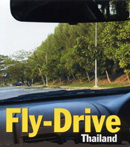
Royal Orchid¹s Fly/Drive programme | | 
Contrary to belief, Thailand has open roads | | 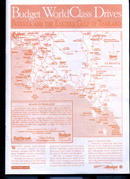
Budget Car rentals provides excellent road maps | | 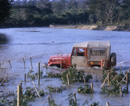
Not so many years ago, there were few bridges in north Thailand | | 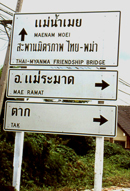
Signs are in Thai and English | | 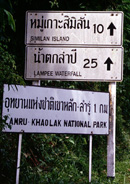
Many signs even point out tourist attractions | | 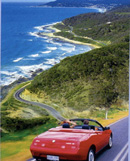
What better driving that Phuket | | 
Behind the driver¹s wheel you can stop and meet the people | | 
And they will all smile for the camera | | 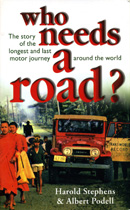
For travel in Thailand, read the author's Who |
|





